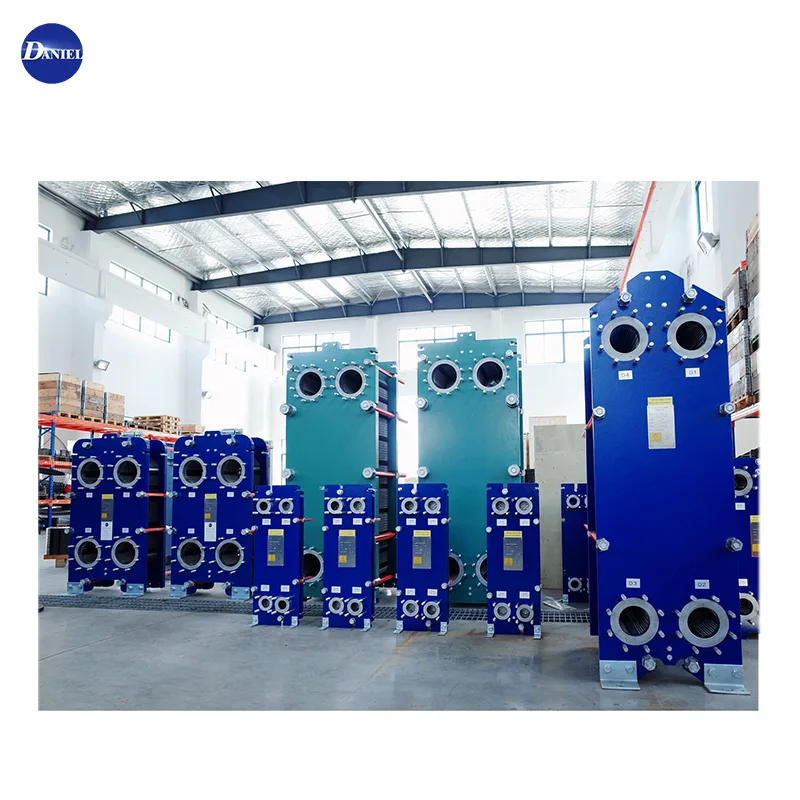
 English
English  Español
Español Português
Português русский
русский Français
Français 日本語
日本語 Deutsch
Deutsch tiếng Việt
tiếng Việt Italiano
Italiano Nederlands
Nederlands ภาษาไทย
ภาษาไทย Polski
Polski 한국어
한국어 Svenska
Svenska magyar
magyar Malay
Malay বাংলা ভাষার
বাংলা ভাষার Dansk
Dansk Suomi
Suomi हिन्दी
हिन्दी Pilipino
Pilipino Türkçe
Türkçe Gaeilge
Gaeilge العربية
العربية Indonesia
Indonesia Norsk
Norsk تمل
تمل český
český ελληνικά
ελληνικά український
український Javanese
Javanese فارسی
فارسی தமிழ்
தமிழ் తెలుగు
తెలుగు नेपाली
नेपाली Burmese
Burmese български
български ລາວ
ລາວ Latine
Latine Қазақша
Қазақша Euskal
Euskal Azərbaycan
Azərbaycan Slovenský jazyk
Slovenský jazyk Македонски
Македонски Lietuvos
Lietuvos Eesti Keel
Eesti Keel Română
Română Slovenski
Slovenski मराठी
मराठी Srpski језик
Srpski језик
What are the applications of heat exchanger plates?
As the core component of plate heat exchangers, heat exchanger plates enhance heat transfer efficiency through corrugated structures. With the advantages of small size and fast heat exchange, they have become the key carrier of heat transfer in many fields such as industry, HVAC, and food.

Industrial manufacturing field: efficient energy recovery
In mechanical processing, heat exchanger plates are used to cool hydraulic oil and cutting fluid. Through the reverse flow of cold and hot media, the oil temperature can be controlled in the optimal range of 35-55℃, reducing the equipment failure rate by 40%. In the chemical industry, corrosive media heat exchange (such as acid and alkali solutions) mostly use titanium or Hastelloy plates, which can withstand extreme environments with pH values of 1-14 and have a heat exchange efficiency 30% higher than that of tubular heat exchangers.
In the cooling system of the steel mill, the stainless steel heat exchanger plate can withstand a high temperature of 150℃, and can transfer 200kW of heat per square meter of heat exchange area per hour, quickly taking away the waste heat generated by roller friction to ensure production continuity.
HVAC and Refrigeration: Precision Temperature Control
Central air conditioning systems rely on heat exchanger plates to achieve water-to-water heat exchange. Heat exchangers using 316 stainless steel plates (thickness 0.3-0.5mm) can control room temperature fluctuations within ±1°C, saving 20% energy compared to traditional shell and tube heat exchangers. In heat pump units, aluminum plates with hydrophilic coatings can reduce condensate residue and increase heating efficiency by 15% in winter.
The condensing system of the cold storage uses low-temperature resistant heat exchanger plates (working temperature - 40°C to 120°C). The compact design saves 30% of the installation space. The frequency conversion technology can accurately adjust the cooling output to meet different storage needs.
Food and medicine: Clean heat exchange guarantee
In food processing, heat exchanger plates are used for pasteurization (such as milk and juice). They are made of food-grade 304 stainless steel with a surface roughness of Ra≤0.8μm to avoid microbial growth. The plates can be disassembled and cleaned meeting FDA hygiene standards. In the wort cooling process of beer brewing, the plate heat exchanger can reduce the wort from 80℃ to 10℃ within 10 minutes, retaining the flavor substances.
The distilled water preparation system in the pharmaceutical industry uses electrolytically polished heat exchanger plates to ensure that there is no impurity precipitation during the heat exchange process, which meets the requirements of GMP certification and is often used for heating and cooling of water for injection.
Energy and environmental protection field: energy saving and emission reduction
The flue gas waste heat recovery of thermal power plants uses corrosion-resistant heat exchanger plates, which can recover the heat in 200-300℃ flue gas for preheating boiler water, saving 5%-8% of standard coal annually. The battery cooling system of new energy vehicles quickly transfers heat through aluminum plates, so that the operating temperature of the battery pack is stabilized at 25-35℃, extending the service life.
During the sludge drying process of the sewage treatment plant, the heat exchanger plate transfers the steam heat to the sludge, evaporates the water and recovers the condensed water, realizing energy recycling and reducing the treatment cost by 30%.
With the development of material technology, new products such as graphene-coated plates (thermal conductivity increased by 50%) and antibacterial plates are constantly emerging, which are promoting the application of heat exchangers in extreme environments such as aerospace and deep-sea exploration and continue to expand the boundaries of heat utilization.





